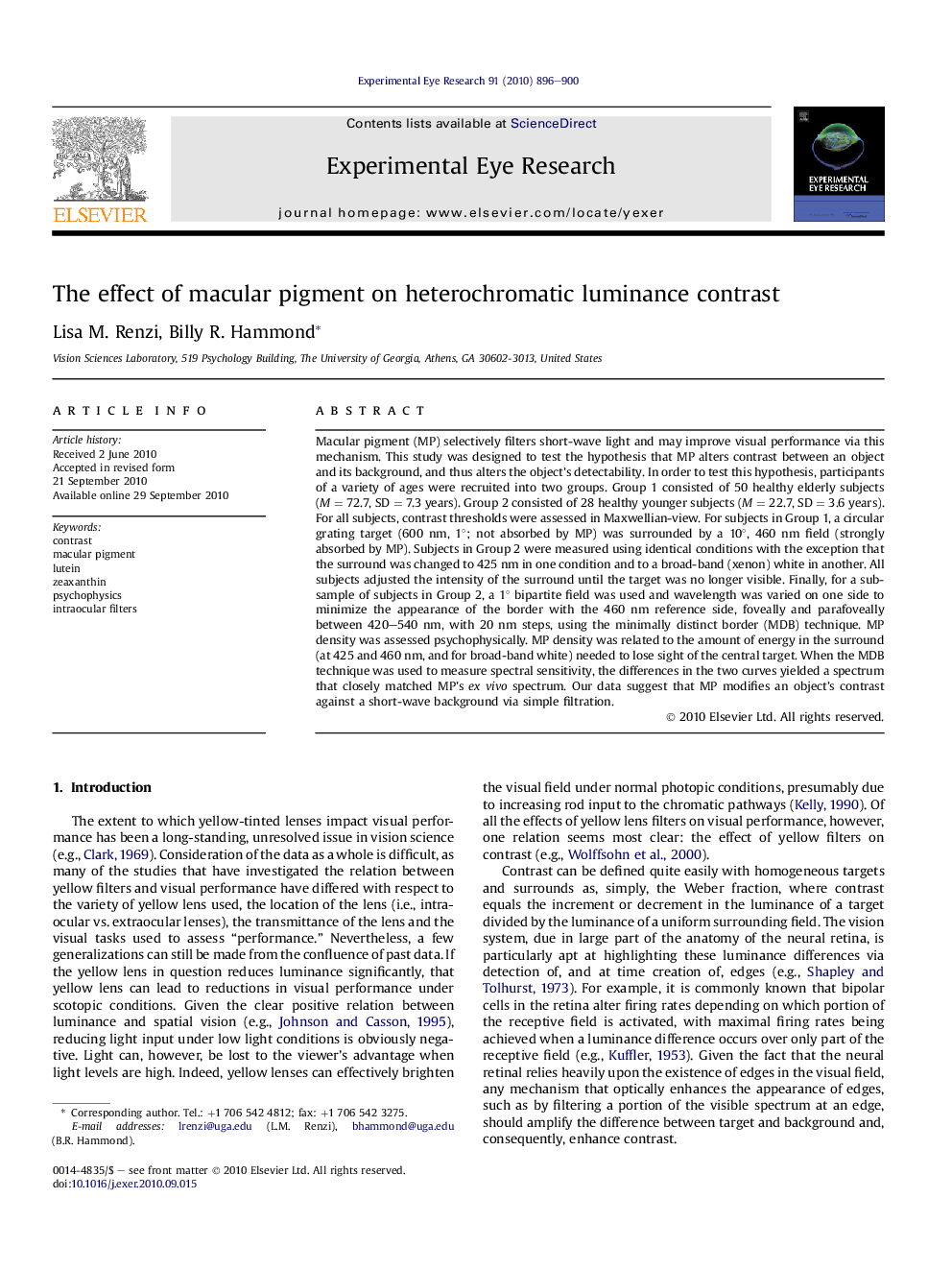| کد مقاله | کد نشریه | سال انتشار | مقاله انگلیسی | نسخه تمام متن |
|---|---|---|---|---|
| 4011754 | 1261161 | 2010 | 5 صفحه PDF | دانلود رایگان |

Macular pigment (MP) selectively filters short-wave light and may improve visual performance via this mechanism. This study was designed to test the hypothesis that MP alters contrast between an object and its background, and thus alters the object’s detectability. In order to test this hypothesis, participants of a variety of ages were recruited into two groups. Group 1 consisted of 50 healthy elderly subjects (M = 72.7, SD = 7.3 years). Group 2 consisted of 28 healthy younger subjects (M = 22.7, SD = 3.6 years). For all subjects, contrast thresholds were assessed in Maxwellian-view. For subjects in Group 1, a circular grating target (600 nm, 1°; not absorbed by MP) was surrounded by a 10°, 460 nm field (strongly absorbed by MP). Subjects in Group 2 were measured using identical conditions with the exception that the surround was changed to 425 nm in one condition and to a broad-band (xenon) white in another. All subjects adjusted the intensity of the surround until the target was no longer visible. Finally, for a sub-sample of subjects in Group 2, a 1° bipartite field was used and wavelength was varied on one side to minimize the appearance of the border with the 460 nm reference side, foveally and parafoveally between 420–540 nm, with 20 nm steps, using the minimally distinct border (MDB) technique. MP density was assessed psychophysically. MP density was related to the amount of energy in the surround (at 425 and 460 nm, and for broad-band white) needed to lose sight of the central target. When the MDB technique was used to measure spectral sensitivity, the differences in the two curves yielded a spectrum that closely matched MP’s ex vivo spectrum. Our data suggest that MP modifies an object’s contrast against a short-wave background via simple filtration.
Research highlights
► A long-standing question in Visual Science is whether the retinal macular pigments can improve various aspects of visual performance through optical enhancements.
► Retinal lutein and zeaxanthin could improve visual performance by absorbing the intraocular scatter of light (reducing glare disability, photostress recovery time, etc). They could also, however, improve vision by enhancing contrast through differential absorption of chromatic borders. This latter idea, although often posited, had never been empirically tested.
► In this study, Renzi and Hammond test young and older subjects using a variety of chromatic conditions. These authors found that MP does enhance contrast as a direct function of absorption.
► MP absorbs a full third of the visible spectrum (400–520 nm). This portion may be particularly deleterious for vision under real world circumstances.
Journal: Experimental Eye Research - Volume 91, Issue 6, December 2010, Pages 896–900